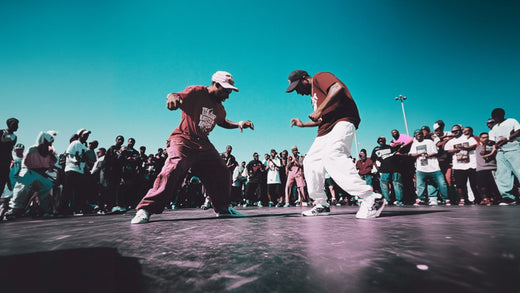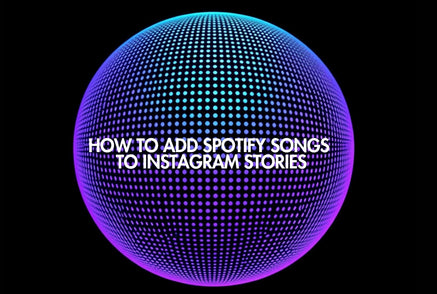East Coast and West Coast Feud: Rivalry of the Decade
The rap war between the East Coast and the West Coast shook the whole hip-hop industry, as artists still talk about what happened during that period. This feud was around two major rappers: Tupac Shakur and Biggie, also known as The Notorious B.I.G. or Christopher Wallace. Even after being killed, these artists have held the attention of music lovers for over two decades, as people still consider California Love, Hit Em Up, Juicy, and other tracks memorable. Moreover, recent trends on Instagram represent edits and music videos with East Coast-West Coast hip-hop hits in the background.

WWE edits with California Love in the background quickly became popular and gained solid engagement over the past few months.
Still, what caused one of the greatest collisions in the music industry? What major events happened during the east coast-west coast hip-hop beef? Music fans interested in the history of the genre and discovering the development of gangsta rap may find this article interesting. Moreover, lots of independent rap artists today learn from the hits of 2Pac, The Notorious B.I.G, Ice Cube, and other legends to make their first steps in the industry. Of course, they use hip-hop promotion to make a solid push, but the historical breakdown will remain crucial for multiple generations. Let's get down and discover more about the greatest rivalry in hip-hop history.
The Birth of Hip-Hop: 1980s and Early 1990s
The first track that belongs to the gangsta rap genre is "6 in the morning," written by Ice Tea and later became a part of the Rhyme Pays album. Moreover, it made a solid push for the development of the West Side hip-hop scene. The N.W.A group with Dr.Dre, Arabian Prince, DJ Yella, MC Ren, and Ice Cube, developed by famous drug dealer Eric Wright, also known as "Eazy-E," released an album called "Straight Outta Compton," showcasing the lives of people in this district. Drive-by shootings, sexism, doping, drug dealing, sexism, and clashes with the police—this was the reality of Compton in the 1980s and 1990s.
The album shares the problems of civilians dealing with police, showing police officers being brutal. The track named "Fuck the Police" represents this problem, as officers were able to act brutally with innocent people because of their skin color.
Fuck the police comin' straight from the underground
A Young nigga got it bad 'cause I'm brown
And not the other color so police think
They have the authority to kill a minority
Also, there was a gangster problem, as these groups were assaulting men and women regardless of their status. They didn't care about themselves, as they were raised in tough environments and never avoided confrontations.
Life ain't nothin' but bitches and money
'Cause I'm the type of nigga that's built to last
If you fuck with me I'll put my foot in your ass
See, I don't give a fuck, 'cause I keep bailin'
Yo, what the fuck are they yellin'?
East Side and West Side: Groups Formation
The next step of gangsta rap evolution took place in 1992 when Dr.Dre released an album called "The Chronic." This event symbolized the birth of g-funk, also known as gangsta-funk, a sub-genre of hip-hop that later became the trademark of the West Coast, which made them distinguish from the opponents on the East Side. In the early 1990s, West Coast rappers were considered dominant on the hip-hop scene. The most dominant artists were gathered at Death Row Records, a record label based in Los Angeles. Dr.Dre, Ice Cube, Snoop Doggy Dog, Nate Dogg, The Lady of Rage, and Kurupt made the West Side ride the night. Still, the East Side didn't agree with such dominance, as their side, represented by 2Pac, Sean “Diddy” Combs, and other artists in Bad Boy Records, was at the epicenter of the battle.
I let them niggas know it's on for life
Don't let the Westside ride tonight (haha)
The Clash of Labels: Bad Boy Records vs. Death Row Records
 VS.
VS. 
The first signs of the battle between the two sides appeared in 1991 when record companies preferred West Coast companies and rejected East Coast groups. Several artists were angry because of that, and one of them, Tim Dog, decided to voice his anger in the song "Fuck Compton." It was full of aggressive statements in the entire rap scene of Los Angeles, triggering members of N.W.A., including Eazy-E and Dr. Dre. Such a move by Tim Dog received various responses from the Chronic, Dr. Dre, Tweedy Bird Loc, and others.
The hot phase of the rivalry began in 1993 when Bad Boy Records was founded by executive and record producer Sean Combs aka "Puff Daddy". One of their debut releases from The Notorious B.I.G immediately became commercially successful and received positive feedback from critics and listeners. It seemed like a renaissance of the West Side hip-hop scene.

Credit:https://abcnews.go.com/Entertainment/tupac-shakur-timeline-key-events-rappers-murder-investigation/story?id=101497618
The next major event happened on November 30, 1994, when Tupac was shot 5 times and robbed in Manhattan in the Quad Recording Studios. The rapper accused Andre Harrell, The Notorious B.I.G., and Sean Combs of being responsible for this incident. In response to that, the "Who Shot Ya?" song was released by The Notorious B.I.G.
Big Poppa smash fools, bash fools (uh)
Niggas mad because I know that cash rules
Everything around me two Glock 9's
Any motherfucker whispering about mines (and I'm)
And I'm Crooklyn's finest (uh)
You rewind this, Bad Boy's behind this
Since the track was recorded before the shooting, 2Pac and most members of the hip-hop community considered this as an attempt to taunt Shakur. After that, in 1995, the CEO of Death Row Suge Knight took a shot at Bad Boy and Combs at that year's Source Awards. He said the following:
"Any artist out there that want to be an artist and stay a star, and don't have to worry about the executive producer trying to be all in the videos ... All on the records ... dancing, come to Death Row!"

Source: Wikipedia
His words were considered a direct attack on the East Side and caused negative reactions from the crowd. Later that year, there was more oil in the fire, as Knight posted the $1.4 million bail for Tupac who was under arrest. In return, the rapper was supposed to sign for his record label. When 2Pac was released, he agreed to the deal and joined Death Row to join the feud with Bad Boys Records. It was a step towards the main battle between 2Pac vs The Notorious B.I.G.
Christopher Wallace against Tupac Amaru Shakur: Clash of Titans
After the incident in Manhattan and the release of the "Who Shot Ya?" track, 2Pac felt betrayed by his mates, spent nine months in the Clinton Correctional Facility in upstate New York, and was released after Suge Knight stepped in. Rapper's move to join the record label wasn't about music; it was a move to get into a powerful group with gang affiliation. Shakur wanted to have authority and wanted to be called "royalty."

Source:https://www.biography.com/musicians/biggie-tupac-friends-rivals-east-coast-west-coast
“He didn’t need credibility. He had credibility, but it wasn’t the kind of credibility he craved. What he wanted, for whatever reason, was to be seen with street credibility... that became his motto: Thug life.”
That was the point when 2Pac turned against The Notorious B.I.G., as they became rivals despite being friends for a long time. It wasn't about behind-the-scenes moments, as they were throwing bombs at each other in interviews and public events. The fact that the conflict was made public only amplified the tensions between the artists, as their collision was discussed by fans over and over again.

In an exclusive interview in 1994 Tupac said that if in 10 years, he just wants to be alive. Unfortunately, it did not happen. The protection of the black people and the danger they all live in was one of the main problems he talked about for years before death.
The story got a tragic end, as both artists were killed. 2Pac was shot multiple times in Las Vegas in 1996, while Biggie was killed in 1997 in Los Angeles. Even though the names of the killers were not revealed, some people in the industry think that Suge Knight was involved in all this.
After the deaths of the two biggest stars, the whole East Coast-West Coast rivalry slowly came to an end, as two major record labels diverged their paths. Death Row Records was closed in 2006 due to bankruptcy (Snoop Dogg bought the name of the label later). Suge Knight was found guilty of voluntarily killing music executive Terry Carter by driving his car into him. He will remain behind bars till 2034 without the right to early release.
Despite the main phase of the feud ending in the 1990s, both sides still feel the aura of conflict between them. Since two major stars were gone, this conflict won't be the same.
What side does Snoop Dogg belong to?
Where did the West Coast rap start?
What intended the hip-hop rivalry between East Side and West Side?





















Skylar Hayes
Informative piece that outlines the basics of the East vs. West Coast dynamics. I appreciated the straightforward approach.
Informative piece that outlines the basics of the East vs. West Coast dynamics. I appreciated the straightforward approach.